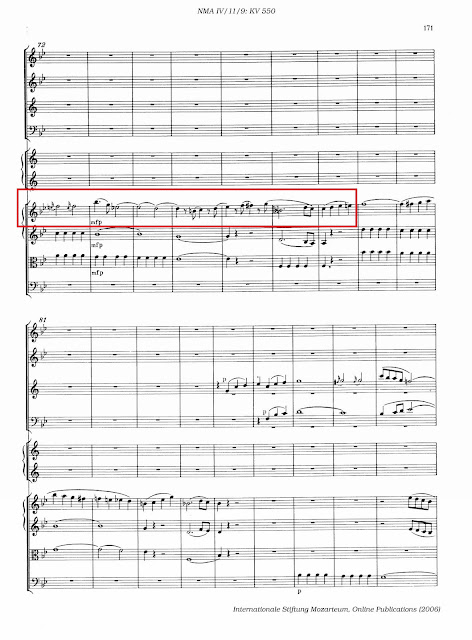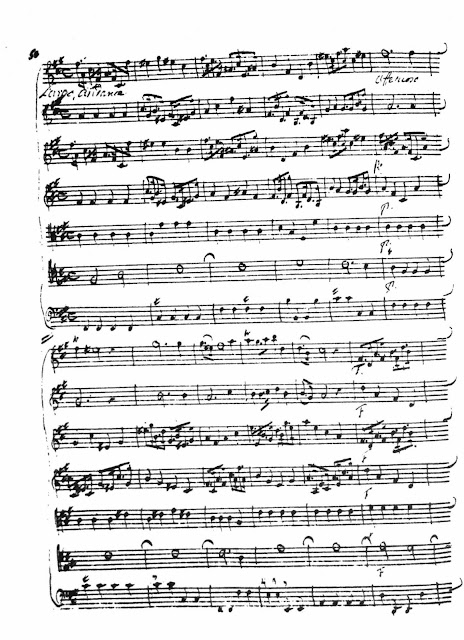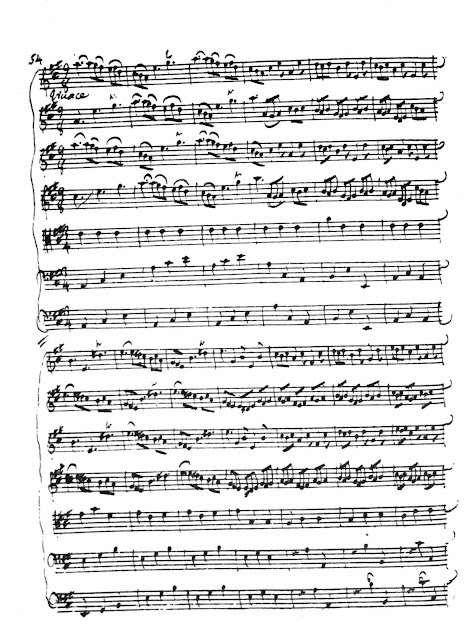CCCXCI. GOLIJOV, Osvaldo (1960- )
Ayre (2004)
Ilana Davidson, soprano
Todd Palmer, clarinet
Alexander Sevastian, accordion
Dan Wions, French Horn
Barbara Allen, harp
Kathe Jarka, cello
Jonathan Bagg, viola
Laura Gilbert, flutes
James Baker, percussion
Jered Egan, bass
Jeremy Flower, laptop
(46:03)
Golijov was inspired to composer Ayre by Luciano Berio's Folk Songs (see Post XIII). Deutsche Grammophon apparently agreed, as the two compositions are coupled on the 2005 CD ...
Ayre -- meaning "air" or "melody" in medieval Spanish largely centers on southern Spain with its intermingling of three cultures -- Christian, Arab, and Jewish -- in an era before the expulsion of the Jews in the late 15th century.
This magnificent performance of an important work of contemporary music deserves to be heard and seen!
1. Mañanita de San Juan (Dawn, St. John's Day)
Traditional Sephardic romance
'Twas dawn: St. John's Day
When Moors and Christians went out to war.
They were battling, they were dying
Five hundred on each side.
Rondale, admiral of the seas,
Was taken captive.
His sword broke and in the middle of the battle
He found himself in prison and started to cry.
The princess heard him from the heights of her castle:
"Don't cry, Rondale, don't hurt yourself.
Marry me, my vineyards, and my brooks
And I will give you 100 gold marks and
Whatever else you want."
"May evil fires burn your vineyards,
Your brooks and your homes.
I have a wife in Paris: that's the one I marry."
When the princess heard this
She had him killed.
2. Una madre comió asado (A mother roasted her child)
Traditional Sephardic song after "The Lamentations of Jeremiah"
And a mother roasted
And ate her cherished son:
"Look at my eyes, mother,
I learned the law with them.
Look at my forehead, mother,
I wore the philacteries there.
Look at my mouth, mother,
I learned the law with it."
3. Tancas serradas a muru (Walls are encircling the land)
Lyrics and Music by Melchiorre Murenu (Sardinia, c. 1820)
Francisco Ignazio Mannu (Sardinia, c. 1795)
Walls are encircling the land
The land seized with greed and in haste,
If Heaven was on Earth,
They would grab it too.
Moderate your tyranny, Barons,
Otherwise, I swear on my life:
I'll bring you down from your horses!
War is now declared
Against your superiority!
You have exhausted
The people's patience.
4. Luna (Moon)
Music by Gustavo Santaolalla (instrumental)
5. Nani
Traditional Sephardic lullaby
Sleep my sweetheart, sleep,
Sleep, apple of my eye.
Your father is coming,
And his spirits are high.
"Open the door, wife.
Open the door
Because I'm coming
And I'm tired from plowing the fields."
"I will not open to you.
You are not tired.
I know you are coming
From your new love."
6. Wa Habibi (My love)
Traditional Christian Arab Easter song
My Love, what has befallen you?
Who saw you and grieved for you,
You who are righteous?
My Love, what is the sin of our times and
Our children?
These wounds have no cure.
7. Aiini taqtiru (My eyes weep)
Traditional Christian Arab Easter song
My eyes weep without pause
For there is no rest until God reveals Himself
And gazes from the sky.
I raised my prayers in Your name, O God.
Do not without your ear.
Listen to my voice and come today.
8. Kun li-guiari wataran ayyuha al-maa' (Be a string, water, to my guitar)
Poem by Mahmoud Darwish (from "Eleven Planets in the Last Andalusian Sky")
Be a string, water, to my guitar,
Conquerors come, conquerors go ...
It's getting hard to remember my face in the mirrors.
Be memory for me
So I can see what I've lost.
(Who am I after these paths of exodus?
I own a boulder that bears my name
On a tall bluff overlooking what has come to an end.
Seven hundred years escort me beyond the city walls.
Time turns around in vain to save
My past from a moment that gives birth
To the history of my exile
In others and in myself.)
Be a string, water, to my guitar.
Conquerors come, conquerors go ...
Heading south as nations decompose
On the compost of change.
I know who I was yesterday,
But who will I be tomorrow
Under the Atlantic flags of Columbus?
Be a string to my guitar, water, be a string.
There is no Egypt in Egypt, no
Fez in Fez, and Syria is too far away.
No hawk on the flag of my people,
No river running east of a palm tree besieged
By the Mongols' swift horses.
In which Andalusia did I meet my end?
Here, in this place?
Or there?
I know I've died, leaving behind what is
Best of what is mine in the place: my past.
I've got nothing left but my guitar.
Be a string, water, to my guitar
Conquerors come, conquerors go.
9. Suéltate las cintas (Untie your ribbons)
Lyrics and Music: Santaolalla
Untie the ribbons of your hair and of your skirt:
Let's devour the night until dawn comes, just like this.
Barefoot girl.
We don't need the sky when you have my back
And I embrace our waist of moon, just like this.
Your silvery waist.
If tomorrow, in the village, you laugh by yourself, wait,
Keep the secret in which you carry me, just like this.
Weed, flower, honey and sand.
10. Yah, annah emtza'cha (O God, where shall I find you?)
Poem by Yehudah Halevy (c. 1112)
The second half of poem #8 is recited over this song
O God, where shall I find You?
Your place is high and hidden.
And where shall I not find You?
Your glory fills the World.
11. Ariadna en su laberinto (Ariadne in her labyrinth)
Lyrics: Traditional Sephardic romance
("Why do you cry fair child?
Why do you cry, white flower!)
"I cry because
You leave me"






















































